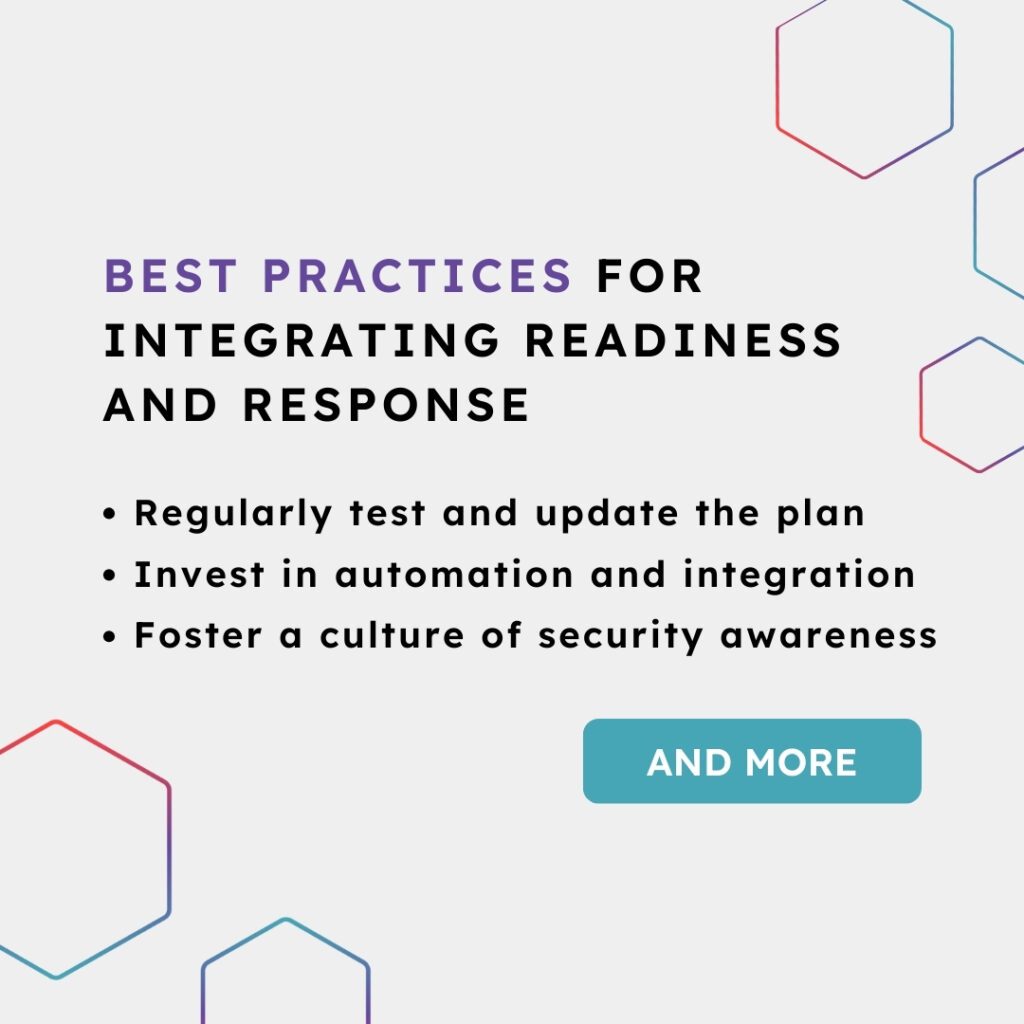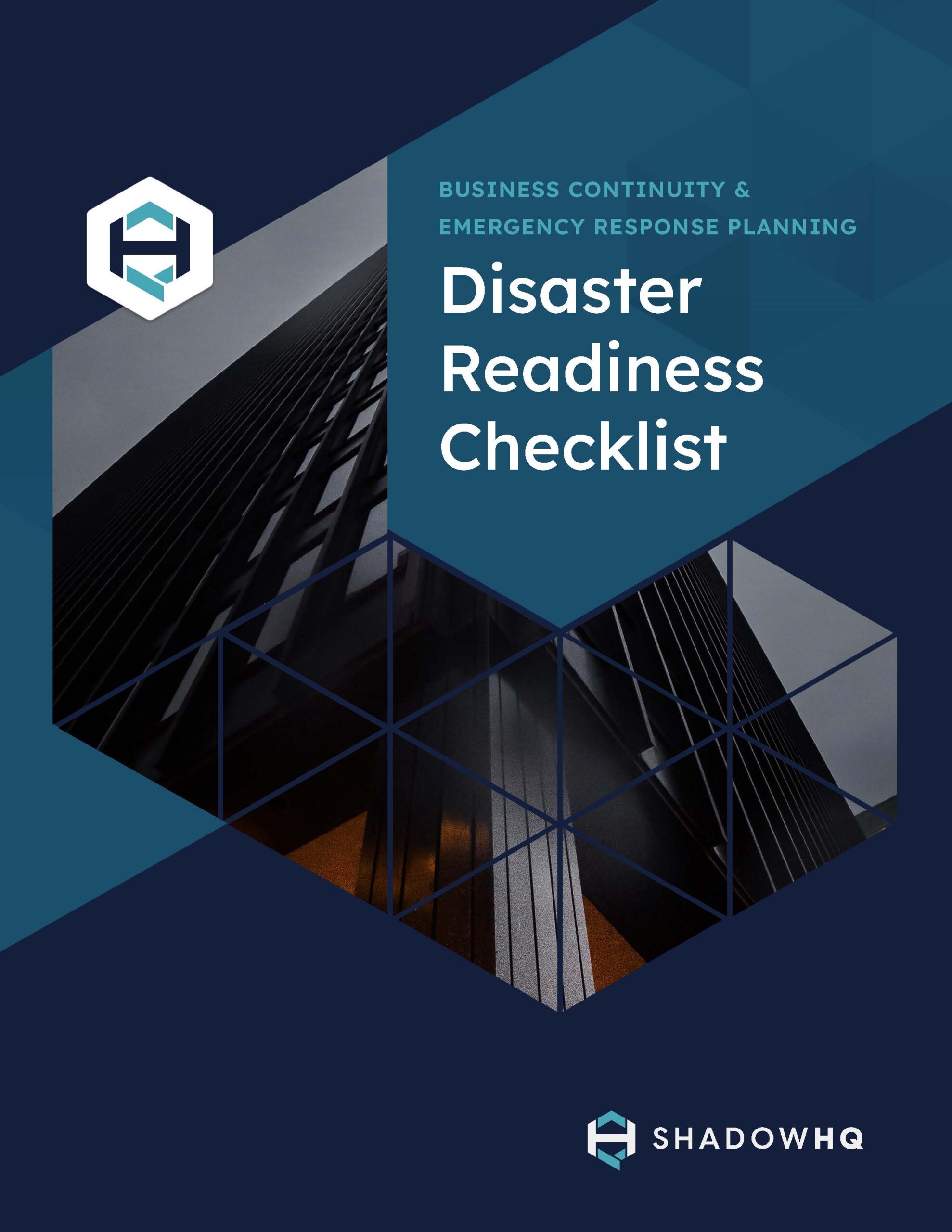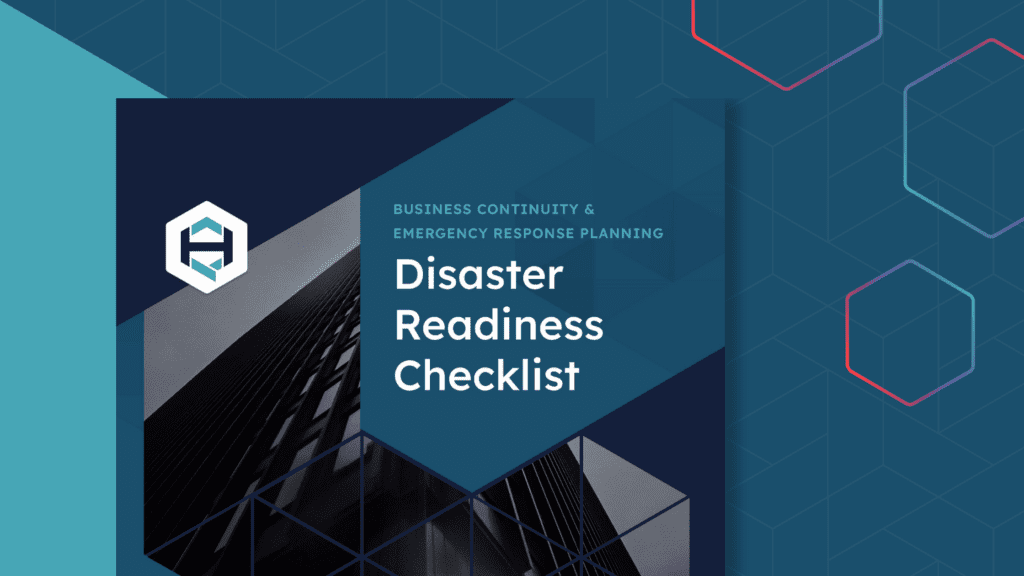Incident Readiness vs. Incident Response: Key Differences
The potential for a security breach looms large over businesses of all sizes and industries, from sophisticated state-sponsored attacks to opportunistic cybercriminals. Organizations must adopt a comprehensive approach to cybersecurity that goes beyond traditional preventive measures as the frequency and complexity of these threats continue to escalate, making preparedness for any cyber incident crucial.
Incorporating threat hunting into your incident readiness strategy allows organizations to proactively identify and mitigate potential threats before they escalate into incidents.
At the heart of this approach lie two critical concepts: incident response readiness and incident response. These interconnected yet distinct elements form the backbone of an organization’s ability to defend against, detect, and recover from cyber incidents.
By recognizing how incident response readiness and response work together, businesses can better allocate resources, develop more effective strategies, and ultimately enhance their security in an increasingly hostile digital environment.

We’ll be breaking down the key differences between incident response readiness and incident response, exploring their unique characteristics, objectives, and roles within an organization’s cybersecurity framework — learn how they work together to keep your organization protected and prepared.
Defined: Incident Response Readiness vs. Incident Response
What exactly do these similar terms mean, and how are they put into practice?
Incident response readiness refers to an organization’s state of preparedness to effectively handle and mitigate cybersecurity incidents. Readiness encompasses the planning, resources, and capabilities before an incident occurs to ensure a fast and efficient response when needed. This includes enhancing cyber resilience by providing tools and resources, such as a cyber resilience assessment and threat hunting, to identify and address security gaps.
Incident response is the actual process of addressing and managing a cybersecurity incident once it has been detected. Responses involve the steps taken to identify, contain, eradicate, and recover from a security breach or attack.
What is Incident Readiness?
Incident readiness is a proactive approach to preparing for and responding to cyber incidents. It involves developing and refining incident response plans, testing incident response capabilities, and implementing measures to prevent, detect, and respond to security incidents. By focusing on readiness, organizations can minimize the impact of a security breach, reduce recovery time, and ensure a swift and effective response. This proactive stance is crucial in today’s threat landscape, where cyber incidents are not a matter of if, but when.
Incident Response Program
An incident response program is a cornerstone of an organization’s cybersecurity strategy, ensuring that the organization is prepared to respond effectively to any security incident. This program involves a series of proactive measures designed to minimize the impact of a cyber attack, reduce recovery time, and ensure a swift, effective response.
A comprehensive incident response program includes several critical elements:
Incident Response Planning: Developing and refining incident response plans is essential. These plans should clearly outline the roles and responsibilities of all stakeholders in the event of a security incident, ensuring everyone knows their part in the response process.
Incorporating threat hunting to proactively identify and mitigate potential threats.
Incident Response Training: Regular training sessions are crucial for equipping the incident response team with the skills and knowledge needed to respond effectively. This training should cover various scenarios and ensure that team members are familiar with the latest threat landscapes.
Incident Response Testing: Conducting regular tabletop exercises and simulations helps test the organization’s incident response capabilities. These exercises can identify gaps in the response plan and provide opportunities for improvement.
Incident Response Review: It’s important to review and update incident response plans and procedures regularly. This ensures that the plans remain effective and relevant in the face of evolving cyber threats.
By implementing a robust incident response program, organizations can significantly improve their incident response readiness. This proactive approach not only reduces the risk of security breaches but also ensures business continuity in the event of a security incident.
Key Differences Between Incident Response and Incident Response Readiness
While these terms are similar, you can see that they work together rather than refer to the same processes — let’s drill down into how they differ.
Effective incident management is crucial for assessing and verifying an organization’s preparedness to respond to incidents, ensuring they can mitigate damage and quickly recover when severe security incidents occur. Incident response readiness involves proactive measures such as threat hunting to identify and mitigate potential threats before they escalate.
Timing and Perspective
The most fundamental difference between incident response readiness and incident response lies in their timing and perspective.
Incident response readiness is proactive and forward-looking. Readiness focuses on preparing for potential future incidents and building the necessary capabilities to handle them effectively. This involves developing plans, establishing processes, training personnel, and implementing tools and technologies, including threat hunting, before an incident occurs. A crucial part of this preparation is proactive incident response, which ensures that organizations are not only ready for incidents but also have pre-incident planning and readiness in place to manage and mitigate threats.
Incident response is reactive and present-focused. It comes into play when an actual security incident is unfolding or has already occurred. The emphasis with responses is real-time actions and decisions to address the immediate threat and mitigate its impact.
Varying Objectives and Activities
The stated goals of readiness and response vary quite significantly. Incident response readiness works towards the following objectives:
- Developing and maintaining incident response plans
Establishing an incident response team and defining roles and responsibilities
Implementing and testing incident detection and alerting systems
Conducting regular training and simulation exercises
Creating communication protocols and escalation procedures
Implementing and maintaining necessary tools and technologies
Incorporating threat hunting to proactively identify and mitigate potential threats
Our approach to cybersecurity and incident response emphasizes extensive experience in planning, executing, and evaluating incident responses, with a diverse team of over 300 cyber security professionals logging over 40,000 hours annually.
Conversely, incident response takes the present, reactive approach to its goals:
Detecting and confirming the occurrence of an incident
Assessing the scope and impact of the incident
Containing the threat to prevent further damage
Eradicating the root cause of the incident
Recovering affected systems and data
Conducting post-incident analysis and lessons learned

Benefits of Incident Readiness
Incident readiness offers numerous benefits to organizations, making it a critical component of any robust cybersecurity strategy. Here are some of the key advantages:
Reduced Risk of Security Breaches and Cyber Incidents: By being prepared, organizations can identify and mitigate potential threats before they escalate into full-blown incidents.
Improved Incident Response Times and Effectiveness: A well-prepared organization can respond to incidents more quickly and efficiently, minimizing damage and downtime.
Enhanced Stakeholder Confidence and Regulatory Compliance: Demonstrating a commitment to incident readiness can boost stakeholder trust and help meet regulatory requirements.
Better Protection of Sensitive Data and Assets: Proactive measures ensure that critical data and assets are safeguarded against potential threats.
Reduced Costs Associated with Incident Response and Recovery: Being prepared can significantly lower the financial impact of responding to and recovering from cyber incidents.
Improved Cyber Resilience and Overall Cybersecurity Posture: Incident readiness enhances an organization’s ability to withstand and recover from cyber attacks, contributing to long-term resilience.
Assessing and Improving Incident Readiness
To ensure that an organization is truly prepared for cyber incidents, it’s essential to regularly assess and improve incident readiness. Here are some effective methods:
Conducting Tabletop Exercises and Simulations: These exercises test the effectiveness of incident response plans in a controlled environment, helping to identify gaps and areas for improvement.
Performing Vulnerability Assessments and Penetration Testing: Regular assessments can uncover weaknesses in the organization’s defenses, allowing for timely remediation.
Reviewing Incident Response Plans and Procedures: It’s crucial to keep incident response plans up-to-date and aligned with the latest threat landscape and organizational changes.
Providing Training and Awareness Programs for Incident Response Teams: Continuous education ensures that response teams are equipped with the latest knowledge and skills.
Implementing Incident Response Retainer Services: These services provide access to specialized expertise and resources, ensuring that the organization can respond effectively to incidents.
Cyber Maturity and Incident Readiness
Cyber maturity is a critical component of incident readiness. It involves evaluating an organization’s cybersecurity capabilities and maturity level to identify areas for improvement. Cyber maturity assessments can help organizations:
Identify Gaps in Their Incident Response Plans and Procedures: Understanding where weaknesses lie allows for targeted improvements.
Develop a Roadmap for Improving Incident Response Capabilities: A clear plan helps prioritize actions and allocate resources effectively.
Enhance Their Overall Cybersecurity Posture: By addressing gaps and weaknesses, organizations can strengthen their defenses against cyber threats.
Improve Their Ability to Respond to and Recover from Cyber Incidents: Higher cyber maturity translates to more effective and efficient incident response and recovery efforts.
By focusing on cyber maturity, organizations can ensure that their incident readiness efforts are comprehensive and effective, ultimately enhancing their ability to protect against and respond to cyber incidents.

Incident Response Exercises and Training
Incident response exercises and training are vital components of an effective incident response program. They ensure that the incident response team is well-prepared to handle security incidents and that all stakeholders understand their roles and responsibilities.
There are several types of incident response exercises and training:
Tabletop Exercises: These are simulated exercises that test the incident response capabilities of the organization. They help identify areas for improvement and ensure that the response team can effectively manage a security incident.
Live Exercises: These real-world exercises test the incident response capabilities in a controlled environment. They provide a more hands-on experience and help the team practice their response skills in a realistic setting.
Online Training: Web-based training modules provide the incident response team with the knowledge and skills they need to respond effectively to security incidents. These modules can be accessed anytime, making it convenient for team members to stay updated.
Classroom Training: In-person training sessions offer hands-on experience and the opportunity to practice incident response skills. These sessions foster collaboration and ensure that the team is well-prepared for any security incident.
Threat Hunting Exercises: These exercises focus on proactively identifying and mitigating potential threats before they escalate into incidents.
Regular incident response exercises and training are essential to maintaining the readiness and effectiveness of the incident response team. By investing in these activities, organizations can enhance their incident response readiness and reduce the risk of security breaches.
The Interplay Between Readiness and Response
While incident response readiness and incident response are distinct concepts, they are closely connected and mutually reinforcing. Strong incident response readiness, including threat hunting, significantly enhances an organization’s ability to respond effectively during an active incident. Conversely, lessons learned from actual incident response efforts inform and improve future readiness initiatives.
Enhancing incident response and organizational preparedness is crucial for achieving cyber resilience. A platform that provides tools and resources, including a cyber resilience assessment, can help organizations identify and address security gaps as part of their incident response planning and overall security posture.
The symbiotic relationship is evident in the incident response lifecycle, which typically consists of the following phases:
Preparation
Detection and Analysis
Containment, Eradication, and Recovery
Post-Incident Activity
The preparation phase aligns closely with incident response readiness, while the subsequent phases fall under incident response. However, the insights gained during the post-incident activity phase feed back into the preparation phase, creating a continuous, positive feedback loop.
Business Continuity and Incident Response
Business continuity and incident response are intrinsically linked. A well-designed incident response plan should include measures such as threat hunting to ensure that critical business operations can continue in the event of a security incident.
Business continuity planning involves several key steps:
Identifying Critical Business Processes: It’s essential to identify the business processes that are crucial to the organization’s operations. This helps in developing strategies to ensure these processes can continue to operate during a security incident.
Developing Business Continuity Plans: These plans outline the steps needed to maintain critical business operations during a security incident. They should include detailed procedures for ensuring that essential functions can continue without interruption.
Implementing Business Continuity Measures: This involves putting in place measures such as backup systems and redundant infrastructure to support critical business processes. These measures ensure that the organization can maintain operations even in the face of a cyber attack.
By integrating business continuity planning into the incident response program, organizations can ensure they are prepared to respond effectively to security incidents. This integration minimizes the impact on business operations and helps maintain business continuity, even during a crisis.
Best Practices for Integrating Readiness and Incident Response Plan
To maximize the effectiveness of both incident response readiness and incident response, organizations should consider the following best practices:
Develop a comprehensive incident response plan: Create a detailed plan that outlines roles, responsibilities, procedures, and communication protocols for various types of incidents.
Regularly test and update the plan: Conduct tabletop exercises and simulations to identify gaps in the plan and keep it current with evolving threats and organizational changes.
Invest in automation and integration: Implement tools and technologies that can automate routine tasks and integrate with existing security systems to improve both readiness and response capabilities.
Foster a culture of security awareness: Educate employees across the organization about their role in preventing and reporting potential security incidents.

Leverage threat intelligence: Incorporate threat intelligence into readiness planning and use it to inform real-time response decisions.
Conduct thorough post-incident reviews: After each incident, perform a detailed analysis to identify lessons learned and incorporate them into future readiness efforts.
Align with business objectives: Ensure that incident response readiness and response efforts are aligned with overall business objectives and risk management strategies.
Incorporate threat hunting: Integrate threat hunting into readiness planning to proactively identify and mitigate potential threats.
A crucial part of this strategy is proactive incident response, which emphasizes pre-incident planning and readiness to effectively manage and mitigate threats.
Incident Response Readiness and Incident Responses to Cyber Attacks Are Both Mission-Critical
As cyber threats grow in sophistication and frequency, balancing incident response readiness with effective incident response cannot be overstated. By investing in readiness and response capabilities, including threat hunting, organizations can significantly enhance their ability to prevent, detect, and mitigate the impact of cyber incidents and recognize the interplay between them.
Businesses that successfully integrate these two aspects of their security strategy will be better positioned to protect their assets, maintain business continuity, and uphold their reputation in the face of evolving cyber risks.
Communication protocols are a cornerstone of an effective response and must be included during readiness and ready to be utilized during an active incident. ShadowHQ offers secure, out-of-band communications to help you make every second count when fighting unknown cyber threats. With ShadowHQ, you can achieve more collaborative communications during a crisis, resulting in less downtime and disruption to the business.
Are you ready to bolster your incident response readiness and be ready during an active incident? Book a demo today to see ShadowHQ in action and how it enhances any incident response.
EWEBINAR
Experience the ShadowHQ platform
Walk through a cyber breach scenario in a 15 minute demo.

GUIDE DOWNLOAD
Disaster Readiness Checklist
When an emergency happens, every minute counts.


